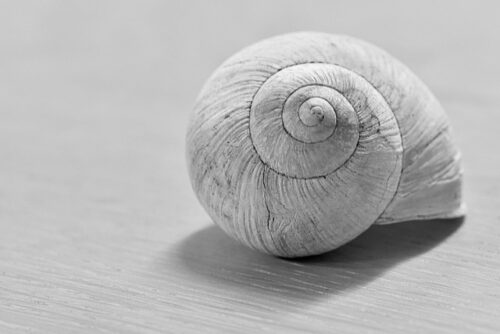Image courtesy of Boris Trost via Pixabay.
Deep inside the ear is a strange place. Inward past the eardrum are three small, intricately shaped, interconnected bones called ossicles. The ossicles lead deeper to the cochlea, a snail-shaped, fluid-filled structure that ultimately supplies auditory information to the nervous system. Sound waves hit the eardrum and make it vibrate in waves that travel along the ossicles up to the cochlea, passing through a membrane-covered opening called the oval window. Struck by the vibrations of the ossicles, the cochlea’s inner fluid moves in its own complex fluid waves. It is these fluid waves that amazingly give rise to the nervous system’s perception of sound. A hair-lined structure called the basilar membrane (BM) spans the length of the cochlea and uses these waves to generate electrical signals that are projected to the brain.
But this system isn’t perfect. Different segments of the BM respond to specific resonant frequencies, which are the pitches that cause the strongest vibrations. Each pitch has a “resonant position” on a specific part of the BM. The problem is that there is a certain amount of friction in the cochlea that removes energy from the fluid waves traveling along the BM, potentially making it harder to resolve quiet sounds. To overcome this, hair cells work to counteract friction so the cochlea becomes sensitive to faint sounds. However, the activity of hair cells runs the risk of creating spontaneous, internally driven vibrations that destabilize the BM. A study authored by Yale biophysics PhD student Asheesh Momi and colleagues sought to figure out how hair cells find the ideal operating region for their activity.
“If you had zero friction, if you ever stimulated something at the resonant frequency, you would actually have infinite vibrations,” Momi said. “Now this is, of course, impossible, because there is never a system with zero friction.” The cochlea thus faces an obvious dilemma: if too much friction is allowed, our hearing would be impaired, but if there is too little, then our ears would ring indefinitely.
Momi and his team proposed a mathematical model for BM dynamics composed of passive and active components. The passive model describes the general layout of the cochlea: the fluid that undulates throughout it, the oval window by which the ossicles’ mechanical motion “pushes” the fluid, and the BM dividing the cochlea into two chambers. The active part of their model takes into account how hair cells detect BM movements and respond rapidly with active processes. From this modeling, the researchers discovered two types of modes of vibration that occur along the BM: localized and extended modes.
“The localized modes are responsible for hearing a particular frequency,” Momi said. “By contrast, the extended modes are not really peaked at one position. They are very broad so they have reasonable displacements across the entire cochlea.”
Because localized modes have specific BM resonant positions, they are responsible for our ability to sense pitch. Meanwhile, extended modes have not yet been shown to serve a particular purpose in hearing. The localized modes are tuned to the edge of instability via a process involving hair cell activity strength and root mean square (RMS) height, a parameter used to measure cochlear vibrational strength. When hair cells experience RMS heights below a particular threshold, they slowly increase their activity and are “tuned” to reduce friction. This low-friction environment enables the amplification of localized modes based on the active processes of the hair cells at the given resonant position. Nonetheless, the cochlea faces another obstacle: amplifying localized modes’ signals can create instability among extended modes, negatively impacting hearing.
“If one mode is unstable, the entire system is unstable,” Momi explained. He and his team hope that their work with modeling cochlear dynamics will segue into research regarding the possible role of extended modes in hearing. Inside that funny little snail in our heads, the feedback loop established between modes of BM vibration and hair cell activity is the root cause of our ability to perceive the plethora of sounds that make up our world.

